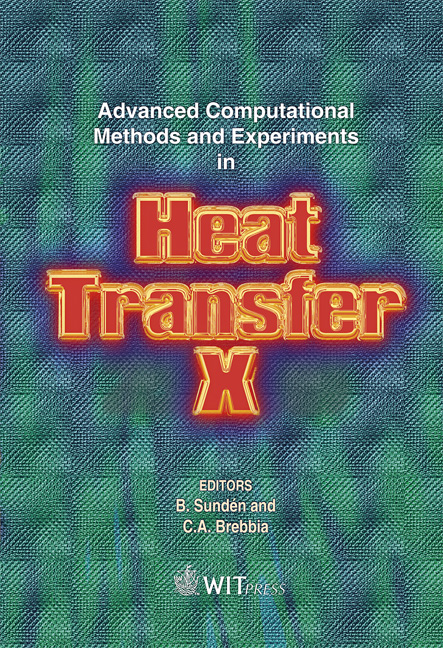Numerical Simulation Of Fluid Flow In A Monolithic Exchanger Related To High Temperature And High Pressure Operating Conditions
Price
Free (open access)
Transaction
Volume
61
Pages
11
Page Range
25 - 35
Published
2008
Size
547 kb
Paper DOI
10.2495/HT080031
Copyright
WIT Press
Author(s)
F. Selimovic & B. Sundén
Abstract
The purpose of this work is the enhancement of performance by a new design of monolithic heat exchangers under steady-state operating conditions. Heat transfer phenomena and hydrodynamics have been studied and visualized by computational fluid dynamics (CFD). Further, a simple gas distribution system has been analyzed in purpose to find the best performance of the exchanger. To achieve this, 3D simulations of air flow were performed. One of characteristics of monolithic structures is the low pressure drop and high heat transfer coefficient. This is because they operate in the laminar flow regime and have high compactness. However, some experimental studies show that when two fluids are introduced into monolith channels, the manifolds cause severe pressure losses. Therefore, in this work, turbulent flow regime at low Reynolds numbers has been investigated to find the difference and better understanding of these structures, which are of interest in high temperature applications today. The simulation shows that the pressure drop of the gas flow distributor is a key parameter affecting the heat transfer in the exchanger channels. Keywords: high temperature heat exchangers, gas flow maldistribution, monolithic heat exchangers, computational fluid dynamics. 1 Introduction Monolith structures are used in industry today and they are produced by extrusion techniques. They are uni-body structures composed of interconnected
Keywords
high temperature heat exchangers, gas flow maldistribution, monolithic heat exchangers, computational fluid dynamics.





